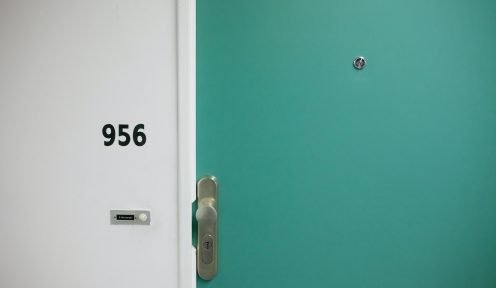
15.11.2018
Real Estate in Denmark
These are the highlights if you want to know more about Real Estate in Denmark. This entry was drafted by KLAR Advokater. Link to E-Iure Network.
This collaboration is a brief step-by-step guidance. In no case it can be considered as legal advice. If you want -or need – legal advice, ask for a lawyer or a law firm. In that case by KLAR Advokater is an excellent option in Danmark.
Types of real estate
One can either own or rent real estate in Denmark, regardless of whether it is for business or private purposes. However, there are exceptions in regard to holiday houses. The most relevant rules for foreign businesses are described in general in the following chapter.
Ownership restrictions
Foreign persons and companies, including such from the European Economic Area (EEA), are, as a main rule, only entitled to buy real estate in Denmark, if they have previously resided in Denmark for a minimum of five years.
However, companies legally registered in an EU and EEA country that are establishing a business in Denmark (e.g. a branch) and citizens of the EEA seeking employment or establishing a business in Denmark can freely buy real estate irrespective of the residential period. This exemption for businesses or citizens of the EEA seeking employment or establishing a business in Denmark does not, though, apply to holiday houses, meaning the requirement of at least five years residency on Denmark applies for any purchase of a holiday house in Denmark.
A subsidiary company established and registered in Denmark by a foreign parent company can freely buy property under the same conditions that apply to (other) Danish companies. However, Danish foreign companies are not allowed to own holiday houses without the approval of the Danish Nature Agency. Thus, it is not possible for foreigners to buy e.g. holiday houses through a Danish company.
Foreign persons or companies, who do not fulfil the five year residency requirement, are only allowed to buy real estate in Denmark with the approval of the Ministry of Justice.
The residency requirement is not applicable to foreigners who inherit real estate in Denmark.
Use restrictions
Residential property:
As a general rule, homes are only for residential use. However, the owner can obtain an approval for full or partial business use.
Furthermore, the majority of the residential property in Denmark is subject to a residence requirement. This means that if a residential property is not occupied by the owner, the owner is obliged to enter into a lease agreement with a tenant. If the property is left empty by the owner for more than 6 months, the municipality in question may force the owner to enter into a lease agreement with a tenant appointed by the municipality. The purpose of this rule is to maintain a certain population standard in each municipality and prevent housing shortages.
Residential property must be used year-round. However, an approval for temporary use can be obtained if certain requirements are met.
Holiday houses:
Holiday houses may not be used as year-round residences. However, senior citizens may, if certain conditions are met, obtain permission for year-round use.
Commercial properties:
Commercial properties may not be used for residential purposes.
Contrary to residential properties, there is no requirement to use the property and it may be left empty by the owner.
Farms
Farms are subject to detailed regulation concerning residence. They are mixed properties, since the farmhouse shall be used for residence and the rest of the property is a commercial property. As a general rule, the owner or tenant is obliged to live at the farm as well as to use it for farming.
District plans
The Danish Planning Act ensures an appropriate development in all parts of Denmark by planning future infrastructure, the use of different districts, preservation of urban areas etc. The act sets the ground rules which public authorities must follow for district planning.
Denmark is divided in to four levels of districts.
- National level
A national district plan includes the whole country and must be enacted by the government. In practice, there is more than one national district plan to simplify the preparation and enacting process.
- Regional level
Denmark is divided in to five regions, which each have their own regional district plan. A regional district plan must be enacted by the region.
- Municipal level
Denmark is divided in to 98 municipalities, which each have their own municipal district plan. Municipal district plans must be enacted by the relevant municipality.
- Local level
In addition to plans on the municipal level, each municipality can enact local district plans. On a very detailed level such district plans are used to determine how specific properties can be used.
Besides being divided in to four planning levels, Denmark is divided in three kinds of land-use zones. All real estate can be assigned to one of these zones, and each zone restricts real estate usage in a different way.
- City zones
The city zones can be used for everything besides holiday houses, e.g. residential and business real estate.
- Land zones
As a rule, land zones can only be used for farming, forest management and for garden centres.
- Holiday house zones
As a rule, year-round use of real estate in holiday housing zones is not permitted.
Planning permissions:
Management of planning permissions is handled by the municipality. Permission must be granted before the construction can begin. In cases where no permission has been granted, the municipality may demand that the building is demolished.
Mortgage financing
The Danish mortgage credit system is unique in several aspects. The loan limits for home loans financed through issuing Danish mortgage bonds are set at 80% of the market value and it is possible to issue Danish mortgage bonds with maturities of up to 30 years, which greatly reduces the annual user cost of housing ownership. The usual terms for residential properties are a loan-to-value ratio of 80% and maturity of up to 30 years while the loan-to-value limit for commercial properties is 60% and 40% for clean sites with no properties.
Additionally, the introduction of more flexible mortgage-loan options has been instrumental in reducing the cost of housing ownership. These loan options include interest-only mortgage financing, mortgage financing with floating interest rates and mortgage financing with capped interest rates. The floating interest rate mortgage loans are based on non-convertible mortgage bonds, where the interest rates are adjusted to market interest rates at pre-defined intervals.
Registration in the Danish land register
In Denmark, real property (land) is typically purchased pursuant to a purchase agreement, followed by a deed of transfer, which is entered into the Danish land register. This land register shows the identity of the owner, all registered mortgages and other rights and obligations such as purchase options, owner’s bankruptcy etc. In most cases, all other burdens and easements such as right of way, local restrictions on construction etc. will also appear in the register.
The land register system also serves as an easy and dependable way of providing security to lenders, as the ranking of priority of lenders will appear clearly on the property’s list of mortgagees. As is the case for transfer documents, the registration of the mortgage will protect the mortgagee’s rights to the property against subsequent purchasers and against the mortgagor’s other creditors.
The land register in Denmark has recently been fully digitalized and centralized. This means that all information contained in the centralized land register is available online at no cost, and that all new registrations of deeds, mortgages, burdens etc. as well as the relevant parties’ signing of the relevant documents are made digitally online.
Commercial leases
Commercial leases are subject to the Danish Business Lease Act, which allows for a high degree of contractual freedom.
Almost all terms and conditions of commercial leasehold are subject to the parties’ negotiations, including terms and conditions regarding rent, adjustment of rent, maintenance obligations, right of assignment, subletting, etc. However, with respect to the landlord’s termination and payment of damages/compensation, the Danish Business Lease Act gives the tenants a high degree of protection.
Duration
Under the Danish lease law, there are only few restrictions in regard to the duration of a leasing contract. The majority of all commercial leases in Denmark run for an indefinite period of time.
Fixed-term lease contracts
Fixed-term leasing contracts are not common in Denmark. A fixed-term leasing contract may not be terminated under the term, unless otherwise agreed to. However, a fixed-term lease is not valid under Danish law unless the fixed-term is well-reasoned in the landlord’s needs. Consequently, a fixed-term may be overruled by the courts if the time-limitation is not found to be well-reasoned in the landlord’s needs at the time when the lease contract was entered into.
Rent
The parties are entitled to agree how the rent is to be determined and paid. Typically, rent is paid in advance on a monthly or a quarterly basis. It is also commonly agreed that the annual rent shall be adjusted every year, e.g. in accordance with changes in the official Danish ‘Consumer Price Index’ or a certain percentage thereof, or that the annual rent shall be increased by a fixed percentage.
Adjustment to the market rent
According to the Business Leases Act, the rent may be adjusted on the basis of the ‘market rent’. Such adjustments cannot take place until four years after commencement of the leasing agreement. These adjustment provisions in the act can be set aside by an express individual agreement in respect to both parties’ access to claim such rent adjustments. It may also be agreed that only the landlord (or the tenant) is entitled to claim adjustment to market rent.
Taxes and fees
The landlord pays all taxes and fees pertaining to the property. Unless otherwise agreed, such taxes and fees are included in the rent to the effect that either party may claim adjustment of rent if the taxes and fees are changed.
Operating costs
Normally, the tenant, in addition to rent on account, pays for the supply and use of heating and hot water based on consumption. Usually, the tenant also pays all expenses for supply of electricity/power to the leased premises and is registered with the relevant utility companies as an independent user.
It is typically agreed that the tenant shall pay the leased premises’ proportional (based on area) share of taxes and fees pertaining to the entire real property and other operating costs such as expenses for janitors, snow clearing, various building maintenance, etc.
Sublease and assignment
The tenant is not entitled to sublease the leased premises without the prior consent of the landlord. However, the lease agreement often contains provisions regarding the tenant’s right to sublease. It follows from the Business Lease Act that the tenant is entitled to allow another tenant carrying out the same type of business as stated in the lease agreement to take over the lease contract on equal conditions, a so-called ‘assignment’ (as opposed to subleasing). According to the Act, the landlord is entitled to reject such assignment, if he has substantial and reasoned grounds for doing so, such as the incoming tenant’s financial position or lack of business experience. The parties can agree not to apply the provision in the Business Lease Act regarding assignment. In such case, the tenant cannot assign the lease contract without the prior discretionary consent of the landlord. Further, the parties can agree on other assignment conditions as stipulated in the Act.
Use and construction
Unless otherwise agreed in the lease agreement, the landlord is responsible for ensuring the legality of the agreed use of the property and the construction and furnishing of the premises, e.g. asbestos in the walls. However, it is often agreed that the tenant, apart from being responsible for the legality of his actual use and furnishing of the premises, is also responsible for any order issued from public authorities after the date of commencement.
Alterations
As a general rule, unless otherwise agreed, the tenant is not entitled to make alterations of the premises during the lease period apart from certain usual changes without the landlord’s consent. Further, unless otherwise stated in the lease agreement, the landlord is only entitled to claim re-establishment upon vacating the premises for alterations carried out during the lease period and approved by the landlord if the landlord at the time of approval has specifically reserved the right to claim reestablishment.
Tenant’s termination
The tenants may terminate a lease without stating any particular reason. However, it is quite normal that the parties agree that the lease cannot be terminated within a certain period of time. If this is the case, the tenant cannot terminate the lease during this period.
Landlord’s termination
It is also quite normal that the landlord must comply to a non-termination period. Furthermore, irrespective of an agreed non-term inability period, the landlord is only entitled to terminate the lease if the termination is based on specific reasons specified in the Business Leases Act, of which the relevant are:
- If landlord wishes to use the leased premises himself, and the termination is deemed reasonable based on an evaluation of the situation of both parties.
- If the leased premises must be vacated due to a demolition of or an alteration of the building. However, if the premises in question are to be leased again after the rebuilding or alteration, the landlord is obliged to offer the tenant to lease premises of the same nature as those terminated in connection with the termination
- If other strong reasons make it particularly important for the landlord to terminate the lease.
The previously mentioned access to adjust the rent to the ‘market rent’ every four years is, from the legislator, meant as a ‘counterweight’ to these restriction in the landlord’s access to terminate the lease.
Damages and compensation to the tenant due to the landlord’s termination
According to the Business Lease Act, a tenant may claim damages incurred as a result of the landlord’s termination. In addition, tenants who are business-protected may claim compensation for loss of goodwill.












